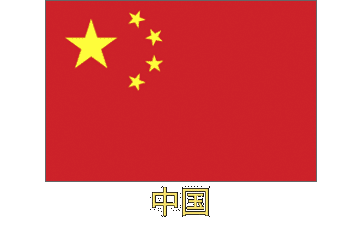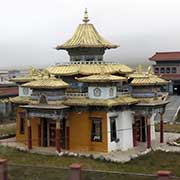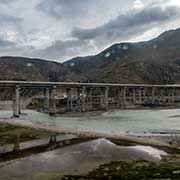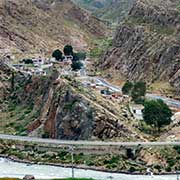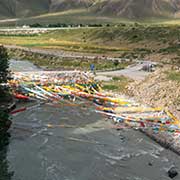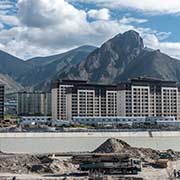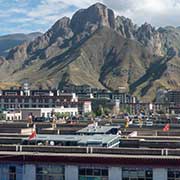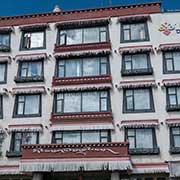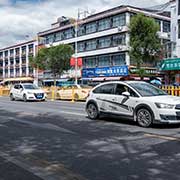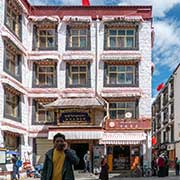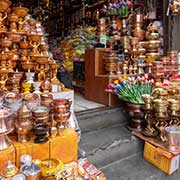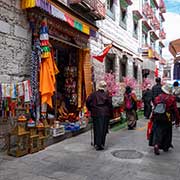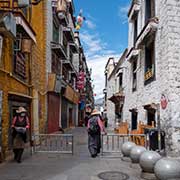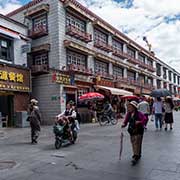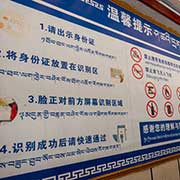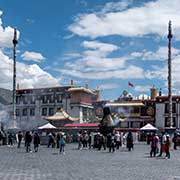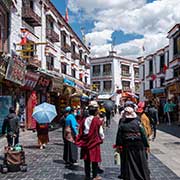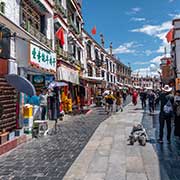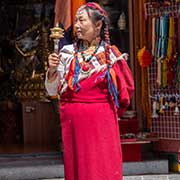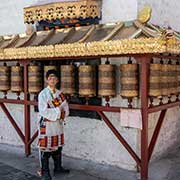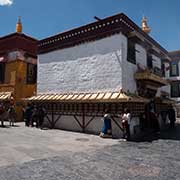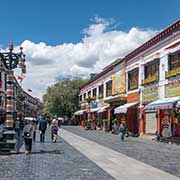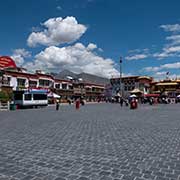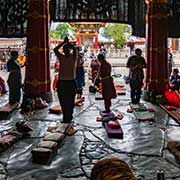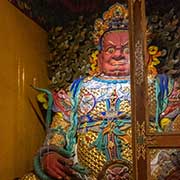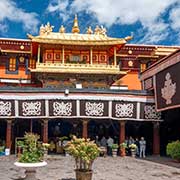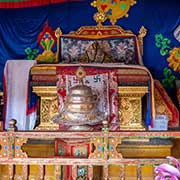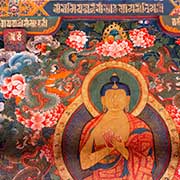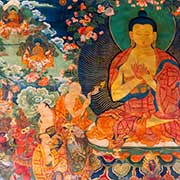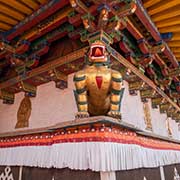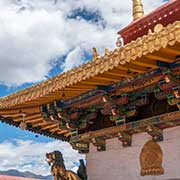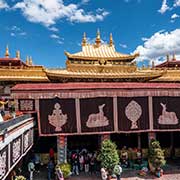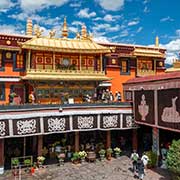Photos of Lhasa, capital of Tibet, Tibet
Lhasa, capital of Tibet
Lhasa, the “place of gods” in the Tibetan language, has been Tibet’s religious and administrative capital since the completion of the Jokhang temple in the mid-17th century. But far earlier, in the mid-7th century, Songtsen Gampo, the leader of the Tibetan Empire, had moved his capital to this site, then named Rasa (“goat’s place”, a herding site), and, in 637, raised the first structures on the site where the Potala Palace now stands.
you may then send it as a postcard if you wish.
The city has an elevation of 3,650 metres, one of the highest cities in the world. Its urban centre has a population of around 300,000 residents, mainly ethnic Tibetans, with a growing number of Han Chinese settlers; some sources claim that those now outnumber Tibetans. Large multi-storied apartment blocks are going up in the outskirts. Before the Chinese takeover, the city had a population of 25,000–30,000; if the population of the large monasteries around the city were included, there would have been 20,000 more.
The old city of Lhasa is the area around the Jokhang temple, about 1 kilometre east of the Potala Palace. The Jokhang temple in Barkhor Square was built in c.640 by King Songsten Gampo. It is the most sacred in Tibet and is considered the “spiritual heart of the city”. Like most monasteries around the city, the Jokhang temple suffered damage before and during the Cultural Revolution (1966–76). The temple was used as a military barracks, a slaughterhouse during the Cultural Revolution, and then as a hotel for Chinese officials. Many of the statues were taken, damaged or destroyed; most of the present statues are recent copies. The temple has been restored and is popular with pilgrims, doing their prostrations, and tourists alike.
The Barkhor is the walk, about a kilometre long, encircling the entire Jokhang Temple complex, a popular devotional circumambulation for pilgrims and locals. Barkhor Square has been the scene of Tibetan protests and demonstrations since 1987. In 1989, locals celebrated here when the 14th Dalai Lama won the Nobel Peace Prize, but this led to arrests, and China denounced the prize. In 2012, two young Tibetan men set themselves on fire in protest against Chinese rule. Now, there is strict security to enter the square, and cigarette lighters are not allowed.


